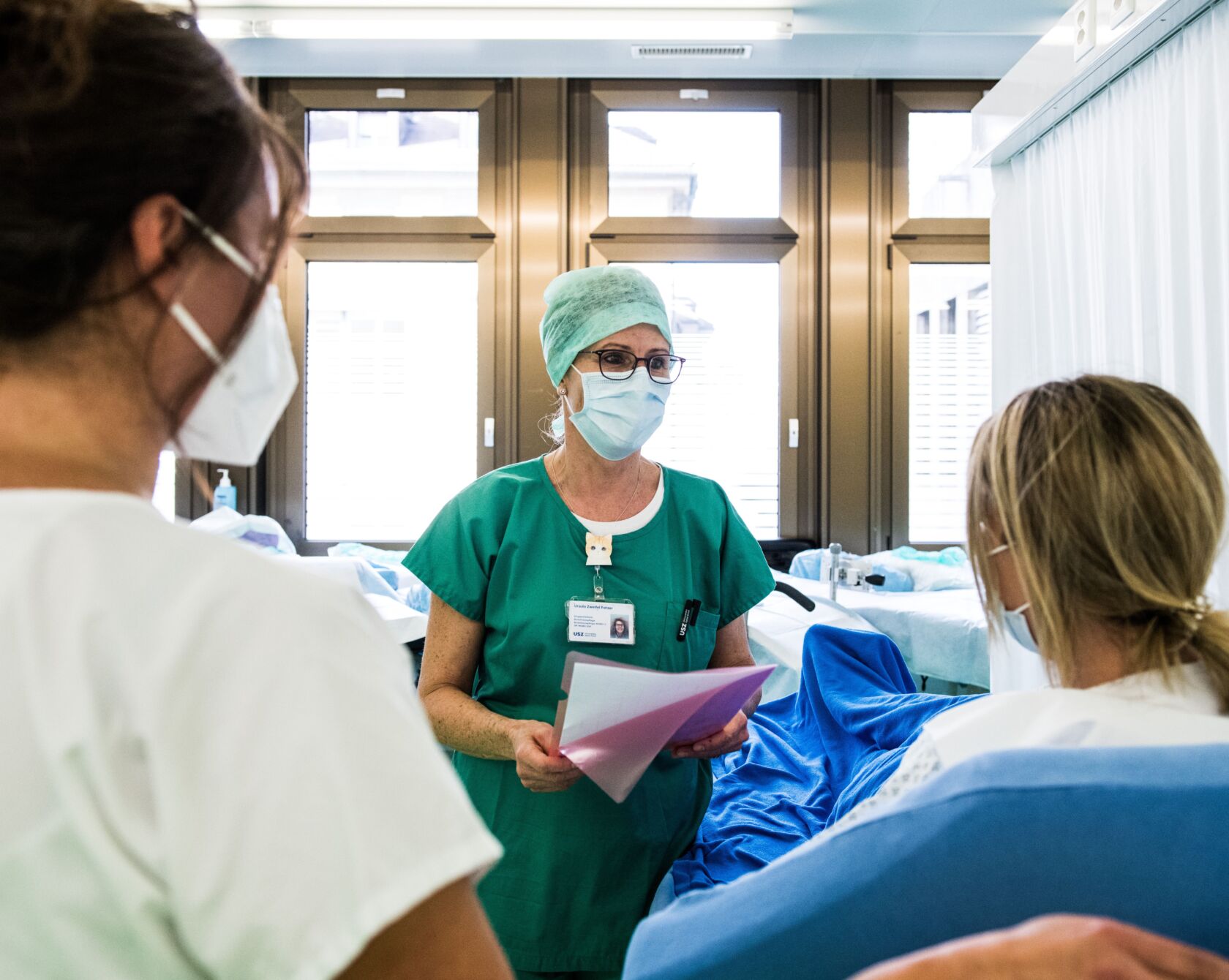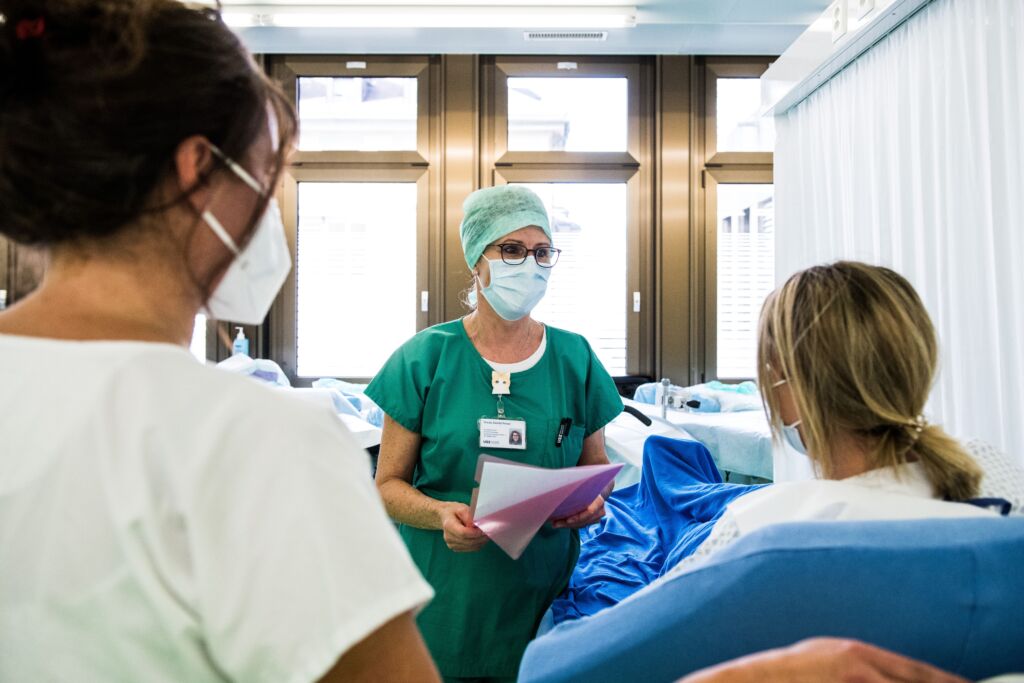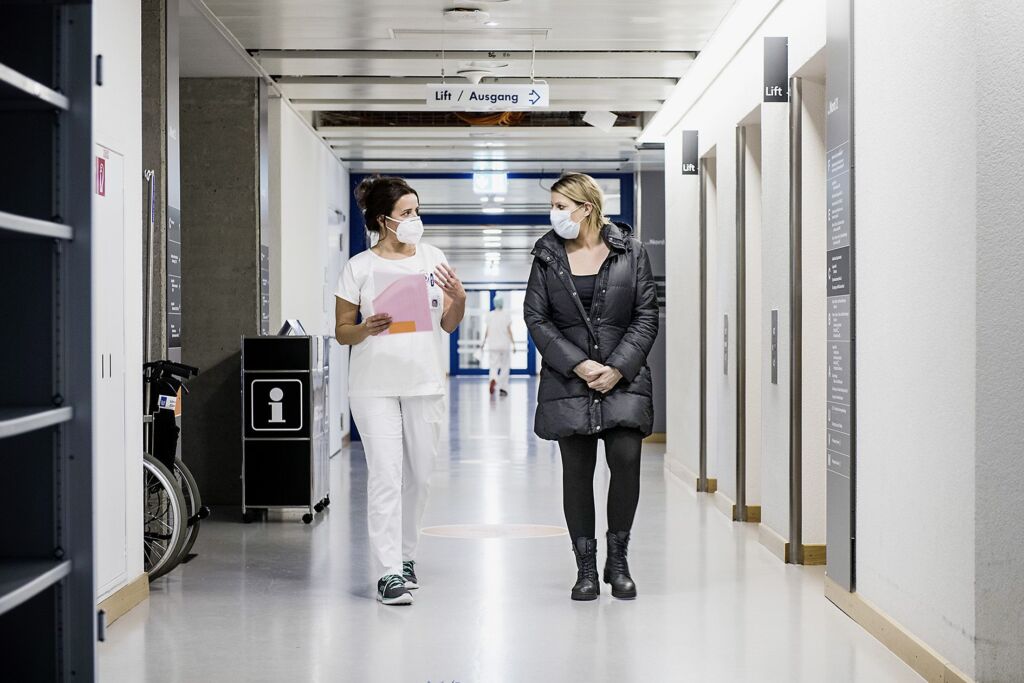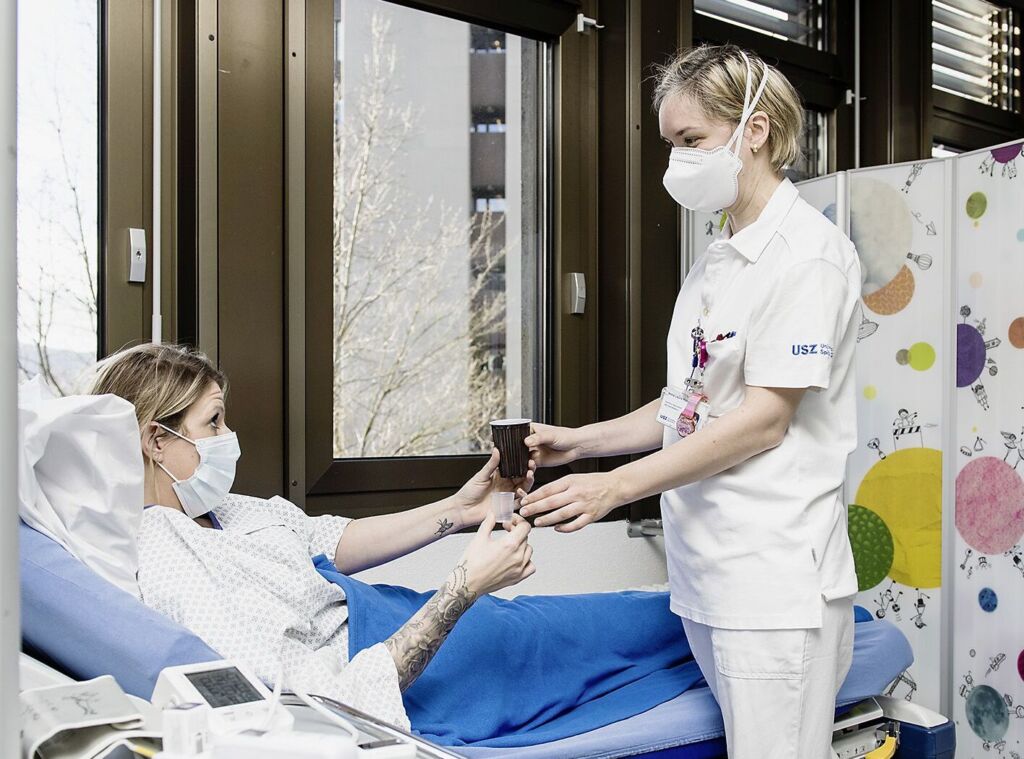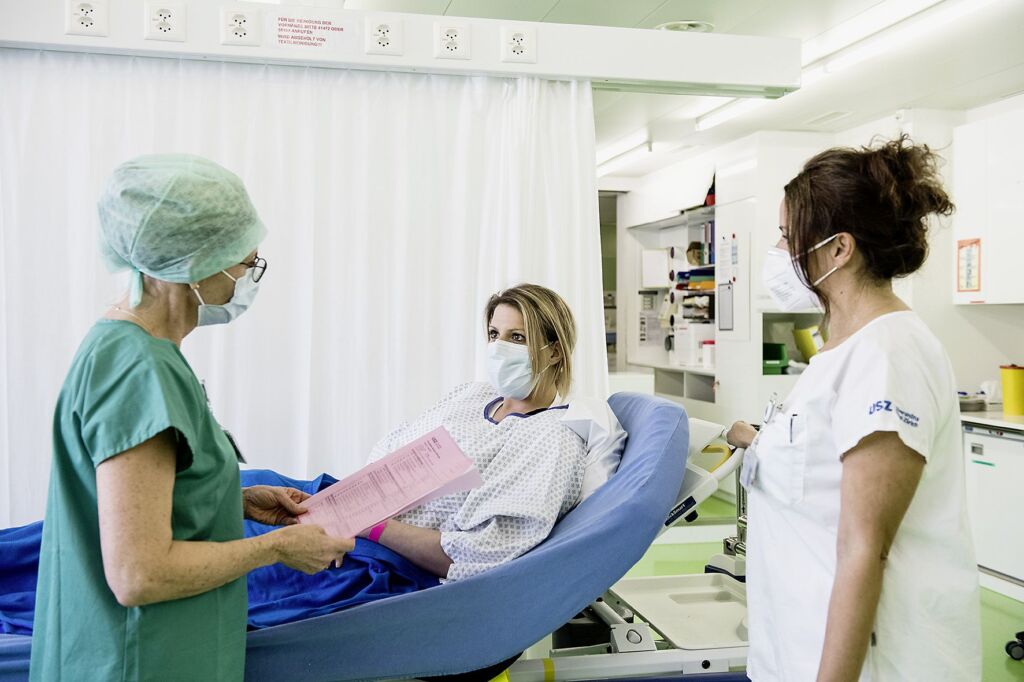With "Same Day Surgery", patients benefit from reduced waiting times and shorter hospital stays.
Since the advent of outpatient surgery, the process leading up to operations involving a hospital stay of several days has also changed. Preliminary examinations, such as blood tests or x-rays, are carried out in advance by the family doctor. The same applies to informative discussions with the anesthesia team and the surgeon. A few years ago, all this was done in hospital the day before the operation – although these examinations do not require a hospital stay. With same-day surgery, this premature entry is no longer necessary. Patients are admitted to one of the USZ’s “Same Day Surgery” wards on the day of the operation and are only transferred to the actual destination ward of the specialist area after the operation.
